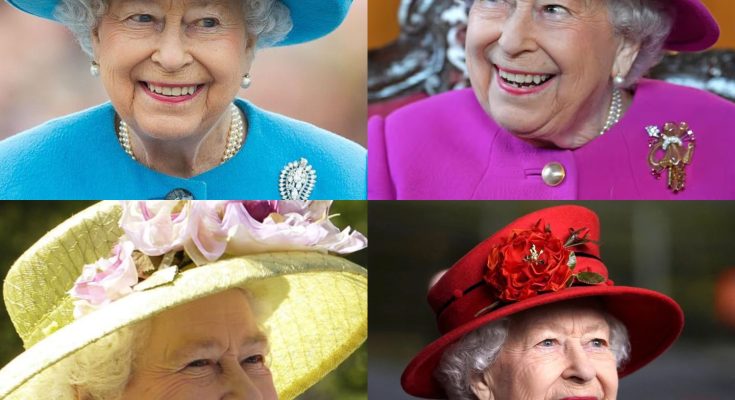As the United Kingdom transitions from the reign of Queen Elizabeth II to that of her son, King Charles III, many aspects of national life will inevitably change.

One of the most visible symbols of Queen Elizabeth’s long reign is the many portraits of her that have adorned public buildings,
government offices, schools, embassies, and other institutions across the UK and the Commonwealth for the past 70 years.
With King Charles III now on the throne, questions naturally arise regarding the future of these iconic portraits of Elizabeth II. What will happen to them?
Will they be removed, replaced, or allowed to remain as lasting tributes to the monarch who shaped an era?
The issue of what to do with Queen Elizabeth’s portraits is a complex one, rooted in tradition, symbolism, and national sentiment.
The image of the queen has been a constant presence throughout her reign,

serving not only as a symbol of her authority but also as a representation of continuity, stability, and the unity of the Commonwealth. Over her seven decades on the throne, these portraits have become ingrained in the fabric of public life, making any decisions regarding their removal or replacement a matter of great sensitivity.
Traditionally, when a monarch passes and a new one ascends to the throne, there is an expectation that public buildings will begin to display portraits of the new sovereign. This tradition reflects the idea of the monarchy as an evolving institution—one that adapts to new leadership while maintaining its foundational values and continuity. As such, it is likely that new official portraits of King Charles III will be commissioned and distributed to public institutions in the coming months and years. These portraits will serve to symbolize Charles’s role as the new head of state, in much the same way that Elizabeth’s portrait symbolized her reign.

However, the question of whether Elizabeth’s portraits will be removed entirely is not as straightforward. Queen Elizabeth II was the longest-reigning monarch in British history, and her tenure as queen spanned a transformative period in global history. Her image has come to represent not just her own personal reign but also an entire epoch of British history. Removing her portraits entirely could be seen by some as a loss of a significant historical and cultural symbol.
There are several possibilities for what may happen to these portraits. In some cases, institutions may opt to keep portraits of Queen Elizabeth II in place, either alongside new portraits of King Charles III or in a separate, more honorary capacity. This could be especially true in places with strong historical ties to the queen, such as institutions that she visited or had a close relationship with. For example, certain government offices, schools, or hospitals that were opened by Queen Elizabeth may choose to retain her portrait as a tribute to her role in their history, even as they display the new portrait of Charles.

In other cases, Queen Elizabeth’s portrait may be moved to a different location within the building. Rather than being prominently displayed in areas of high visibility, her image could be relocated to a more reserved or ceremonial space, where it would still be accessible but would not overshadow the new monarch. This approach would allow institutions to honor the legacy of Elizabeth II while also giving precedence to the current king.
Another factor to consider is public sentiment. Queen Elizabeth was widely beloved, not only in the United Kingdom but also across the Commonwealth and the world. Her image has become iconic, and there may be resistance from the public or from certain institutions to removing her portraits entirely. The strong emotional connection that many people feel toward the late queen suggests that her image will continue to hold a place of prominence in the public sphere for years to come, even after King Charles III’s reign is well underway.

One possible solution is the creation of dual portraits—displaying images of both Queen Elizabeth and King Charles together in certain public spaces. This could be seen as a symbolic gesture, representing the continuity between the two reigns while also acknowledging the deep historical significance of Elizabeth’s time on the throne. Dual portraits would allow institutions to pay tribute to both monarchs, showing respect for the past while embracing the future.
The situation may also vary across the Commonwealth. In some countries where Elizabeth served as head of state, her image holds a particularly strong cultural resonance. For example, in Canada, Australia, and New Zealand, where the queen’s image is deeply woven into the national fabric, decisions about whether to replace her portraits with those of King Charles III could be influenced by local traditions and public opinion. In some Commonwealth nations, portraits of Queen Elizabeth might remain in place as a gesture of respect for her unparalleled legacy.

Another layer to this issue involves the more personal and intimate portraits of Elizabeth that are displayed in private institutions, clubs, or even private homes. While there will likely be official guidance regarding the replacement of portraits in government buildings and other formal institutions, the decision about whether to retain or replace portraits in more private settings may be left up to the discretion of individuals or smaller organizations. Some may choose to continue displaying portraits of the queen as a way of honoring her life and reign, while others may feel it appropriate to shift their focus to the new king.
Beyond the physical portraits themselves, the legacy of Queen Elizabeth II will undoubtedly continue to be honored in various ways throughout the UK and the Commonwealth. Statues, commemorative coins, stamps, and other tributes to her reign will remain visible reminders of her contributions to the nation and the world. Her image may fade from some public walls, but her legacy is likely to endure in the hearts and minds of the public for generations.

In conclusion, while it is expected that portraits of King Charles III will begin to replace those of Queen Elizabeth II in public buildings, the fate of the queen’s portraits is unlikely to be uniform across all institutions. Some may opt to retain her image in a prominent place, while others may relocate it or incorporate it into dual displays with Charles’s portrait. Given Elizabeth’s unique place in British history, her image will remain a powerful symbol, even as the monarchy enters a new era under King Charles III’s leadership. Ultimately, the future of these portraits will be shaped by a blend of tradition, respect for history, and the evolving sentiments of the British public and the wider Commonwealth.



